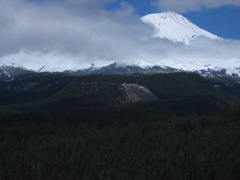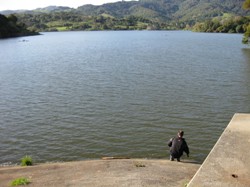
On the eve of the season’s fourth Sierra snow survey, David Gorn files a report that poses the question: “Is it time for Californians to redefine the term “drought?” His report airs on The California Report Thursday morning and some additional thoughts appear here:
Anybody who’s lived in California for a while has been trained to watch the snow. When the monthly snow surveys come around, we handicap them like they’re the Triple Crown. We all know what’s at stake: when it doesn’t snow, our reservoirs don’t get enough runoff, and we dive deeper into drought.
The snowpack gives us a sneak preview of the coming summer, when our other water sources dry up. The last big snow measurement of the season happens on Thursday. State officials are hoping for the best but preparing for something less than a miracle.
We get about a third of our water from snowpack runoff. But the biggest number in water circles is not the number of inches of snow. It’s the amount of runoff that snowmelt produces. And that can be deceiving, which may explain the caution that always seems to pervade official post-survey pronouncements.
Case in point: Last year at this time, the snowpack measurement was 100% of normal and state officials were breathing easier. And yet the amount of runoff that snow produced last year was only 58 percent of normal, and that’s frighteningly low.
What accounts for the difference? Department of Water Resources meteorologist Elissa Lynn says that the wind can disperse snow, which happened last year (maybe Nevada had a “windfall”). Also, a hot spring can melt snow before its time, resulting in too much runoff being released too early, leaving too little for the summer months.

A little rainy weather can be deceiving, too. Even though some local reservoirs around the state topped off–or nearly so–with the late-season storms of February and March, some of the people served by those same reservoirs may still face rationing this summer. That’s because many communities draw their water from multiple sources, which may include mountain runoff.
Projections this year are for snowpack runoff to clock in at about 70% of normal. That beats than the 52% and 58% of the previous two years but is still cause for concern.
One thought on “Handicapping the Snowpack Derby”
-
Pingback: Survey Says: Drought Still On | KQED's Climate Watch
Comments are closed.
